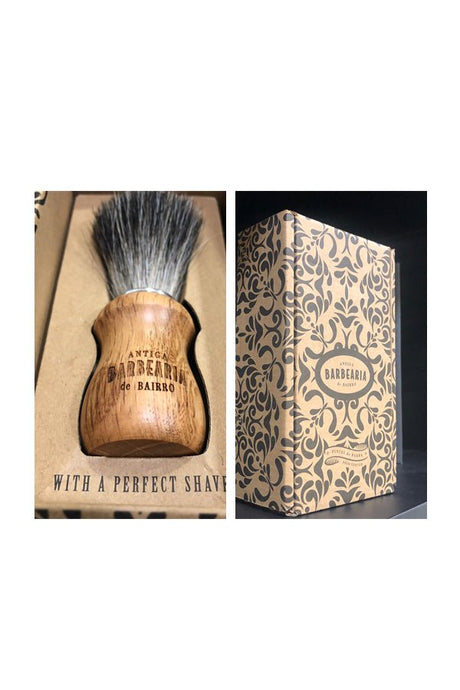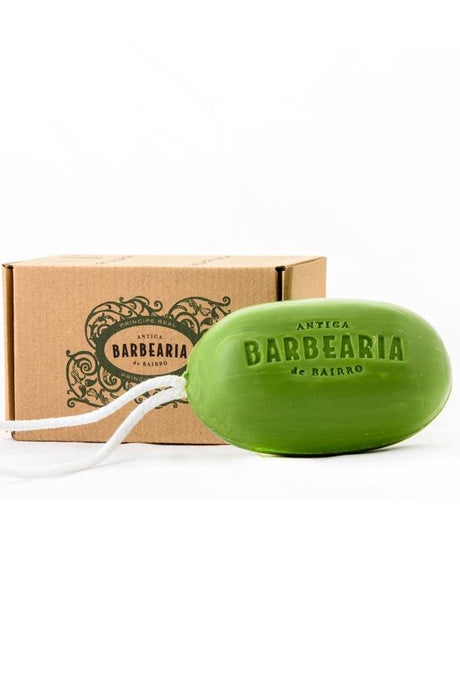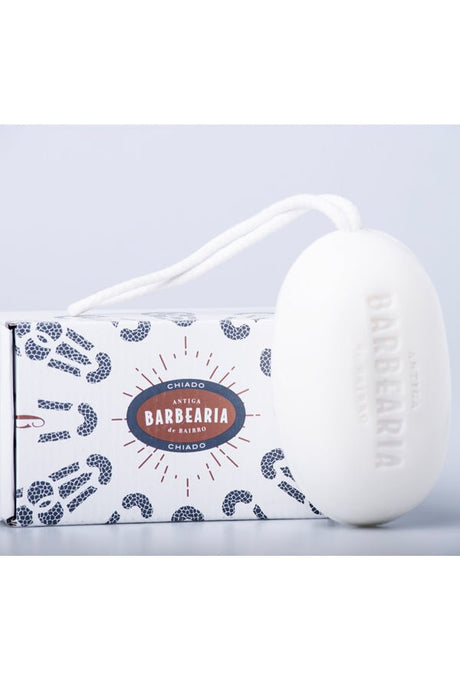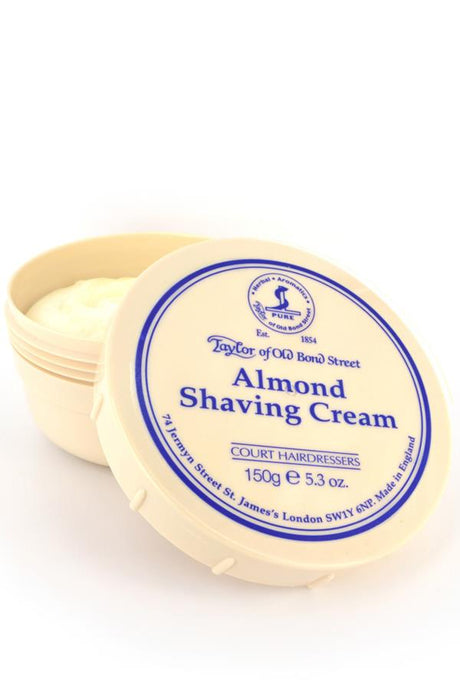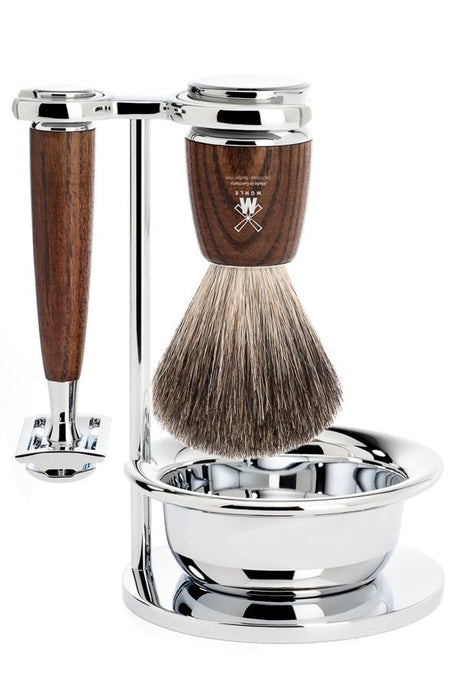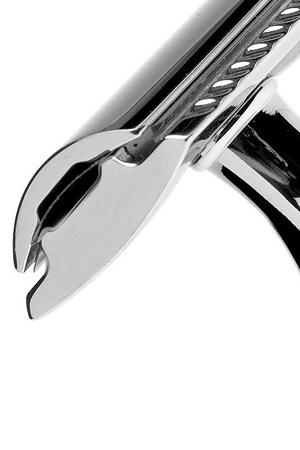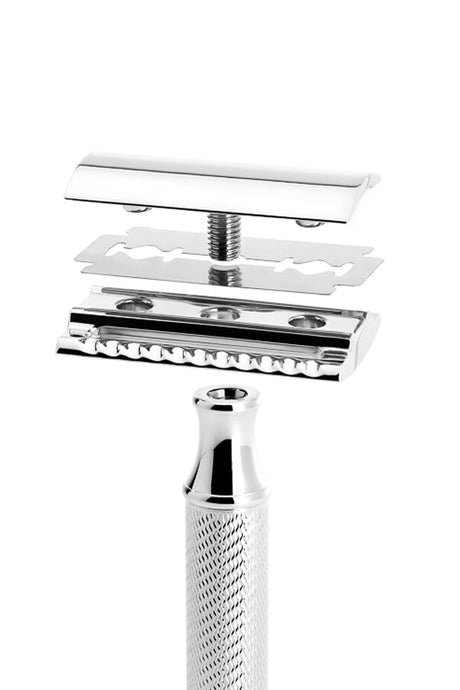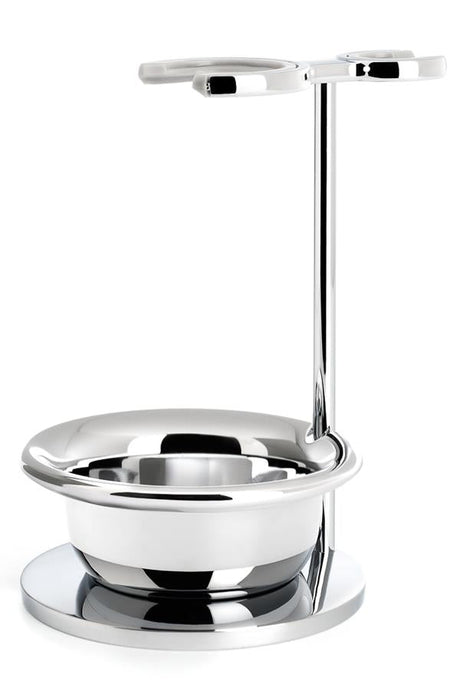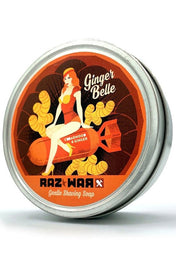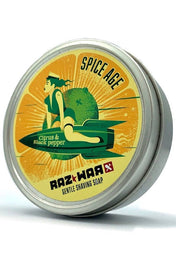What is a good shaving soap or shaving cream?
We often say: 'throw away that cheap supermarket or drugstore shaving soap or shaving cream and start using really good shaving soap or shaving cream !' A good shaving soap or cream should do three things:
- it produces a full and stable shaving foam and remains moist for a long time, giving the beard hairs time to become softer and softer;
- it produces a full-bodied protective layer or lubricating film to protect the skin from the razor;
- and the various caring oils and fats nourish the skin, resulting in fewer shaving and skin irritations during or after shaving.
What is a bad shaving soap or shaving cream?
Bad shaving products are highly alkaline and do not make good shaving cream. The shaving foam dries quickly and does not feel greasy. These products have a strong dehydrating effect. They do not protect the skin sufficiently, they dry out the skin, damage and irritate the skin. The usual supermarket and drugstore shaving products from the well-known retail brands are very aggressive. Many men who use these products suffer from dry, tight skin or a burning sensation after shaving. Many of these ignorant people think: 'this is part of life, right?' Wrong! Do you recognize these complaints? Then immediately throw this worthless shaving product in the trash.

What are the ingredients of a shaving soap and shaving cream?
All soaps consist of (vegetable or animal) oils and fats and a lye, such as potassium hydroxide or sodium hydroxide. If you put these substances together you get a chemical reaction: the saponification process. Potassium hydroxide makes shaving creams smooth and sodium hydroxide makes shaving soaps hard. Just a fun fact: lye is also used as a paint stripper and sink unblocker. Shaving soaps and shaving creams are so-called super-greasy soaps. Less lye is used than is necessary to saponify all oils and fats. The various commonly used fats contain a high concentration of unsaponifiable components. As a result, it remains as excess fat in the shaving soap after the saponification process. This way the skin is nourished and cared for.
Labels of shaving products always contain a list of the various ingredients of the product in question. The substances that occur most frequently in terms of quantity in the article are listed at the front. The components that are least present are therefore at the back. The most commonly used ingredients are water, oils, fats, fat components, lyes and glycerin. Perfumes or fragrances are usually at the back of the list. We do not intend to provide a complete list here. The overview consists of the most common and important components of shaving soap or shaving cream.
Almond oil
Almond oil provides a stable and creamy foam. It has a strong moisturizing and nourishing effect.
Castor oil
Castor oil or castor oil comes from the legume of the castor tree. This oil has been used since ancient times for many medicinal and skin care applications. It provides a stable and long-lasting, soft and creamy foam. It attracts and retains water. This gives it a moisturizing and nourishing effect.
Glycerin
Glycerine is formed during the saponification process. It consists mainly of triglycerides (a combination of glycerin and three fatty acids). It provides extra 'glide', attracts water and also retains it well. It ensures that your shaving soap or shaving cream foams vigorously.
Jojoba oil
Jojoba oil is extracted from the seeds of the Simmondsia chinensis plant. Jojoba does not foam much on its own, but ensures that the foam of other oils remains more stable. It has a moisturizing effect, is easily absorbed by the skin and promotes silky soft skin. The chemical composition is very similar to the sebum of our skin.
Potassium hydroxide
Potassium hydroxide is a lye and combines with oil or fat.
Coconut oil
Coconut oil provides a lot of foam and makes the shaving soap foam faster. The foam also becomes softer and more compact due to this oil: soft and fine bubbles.
Sodium hydroxide
Sodium hydroxide is a lye and combines with oil or fat.
Shea butter
Shea butter is a vegetable fat extracted from the fruit of the African tree Vitellaria paradoxa. It provides a stable, long-lasting and creamy foam. Shea butter has a high percentage of unsaponifiable parts. After saponification with lye, a lot of fat remains in the shaving soap. This way it can properly nourish and care for the skin.
Stearic acid
Stearic acid is a saturated fatty acid. It comes from both animal and vegetable fats or oils. It provides a stable and long-lasting, creamy and compact foam.
Kaolin
Kaolin is a clay mineral. It provides extra glide while shaving.
Fragrance ingredients
Many shaving products have a scent. Many of these added fragrance ingredients are either composite synthetic or natural fragrance oils or a mix of various essential oils. Fragrance ingredients can irritate the skin. Are you sensitive to this or do you hate odors? Fortunately, there are also neutral unscented shaving soaps and shaving creams.
Here are some common fragrance ingredients:
Eugenool is a widely used fragrance and flavoring agent. It is a natural component of various essential oils and it smells like cloves and cinnamon. It is extracted from clove oil or produced synthetically.
Geraniol is a widely used fragrance and flavoring agent. It is a natural component of various essential oils and it smells like roses.
Limonene is a commonly used fragrance and flavoring agent. It is a natural component of various essential oils and it smells like citrus. It is extracted from orange peels.
Linalool is a widely used fragrance and flavoring agent. It is a natural component of various essential oils and it smells like roses.



